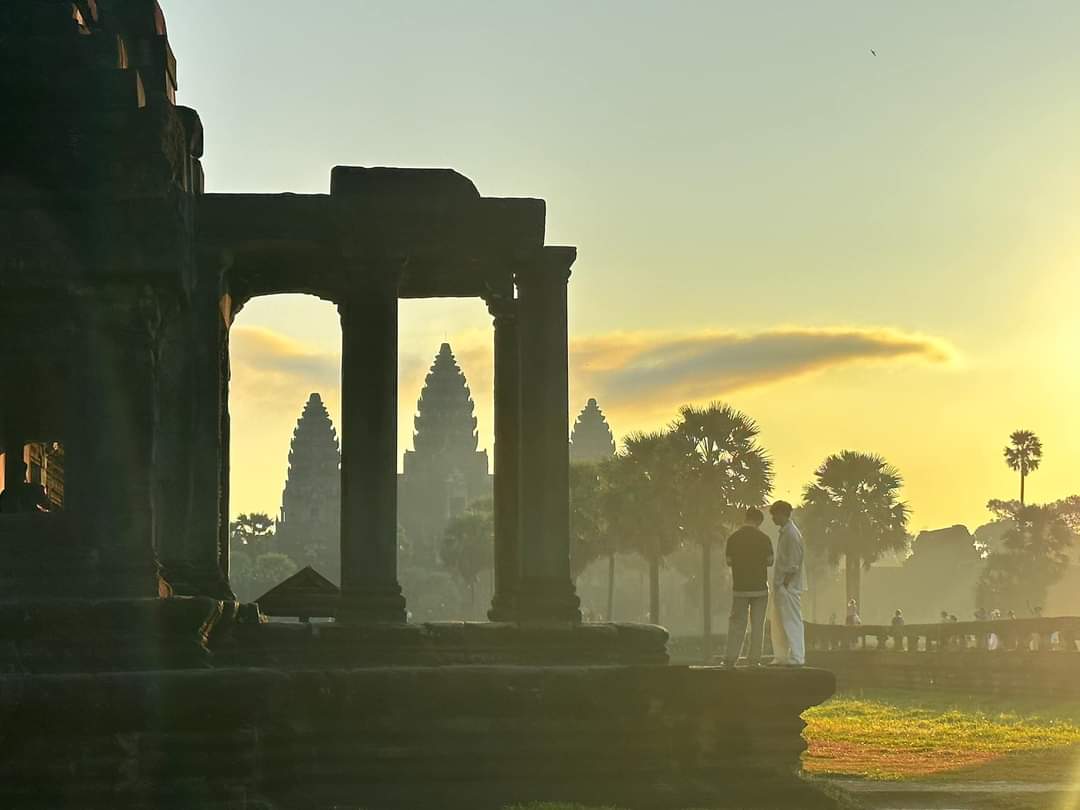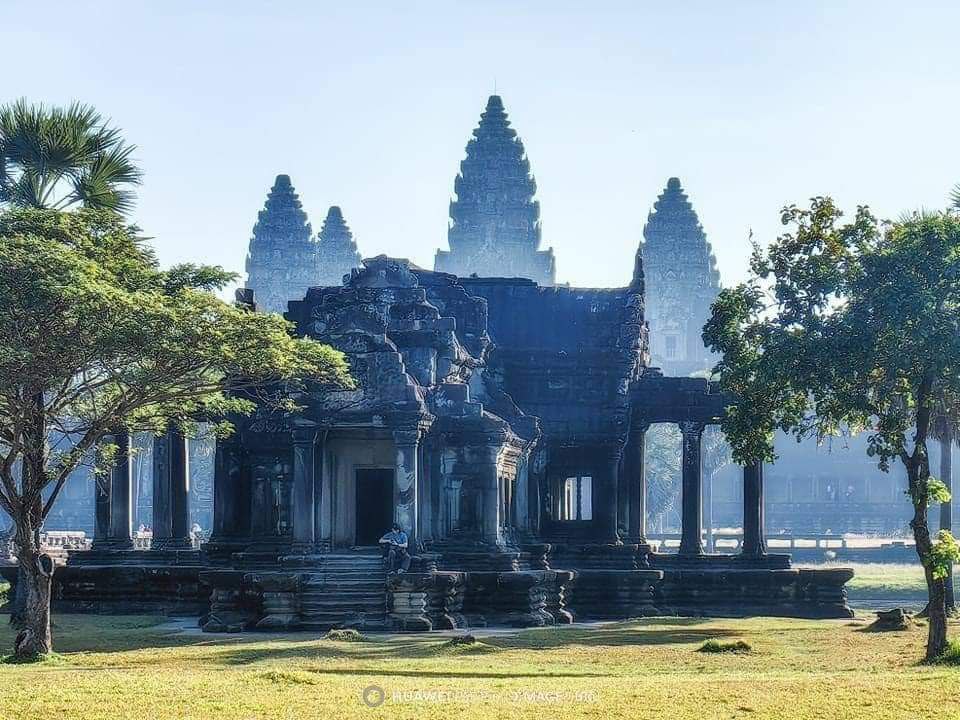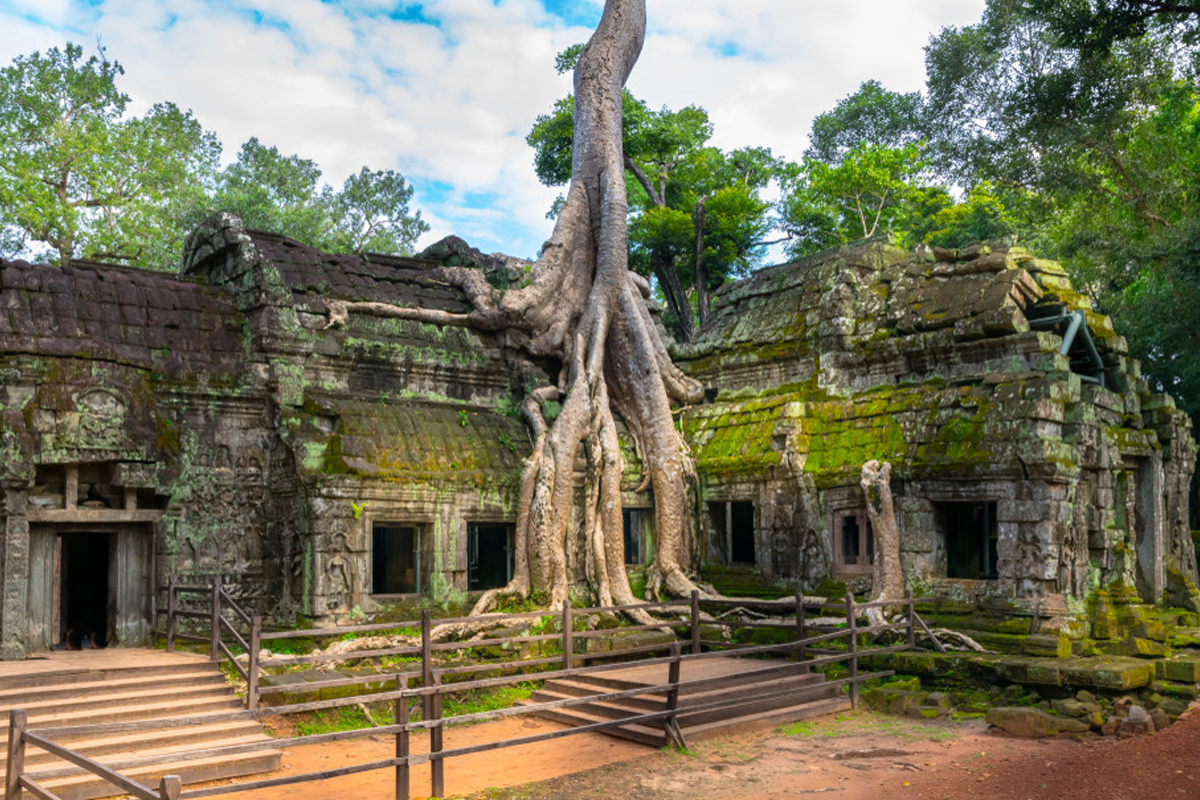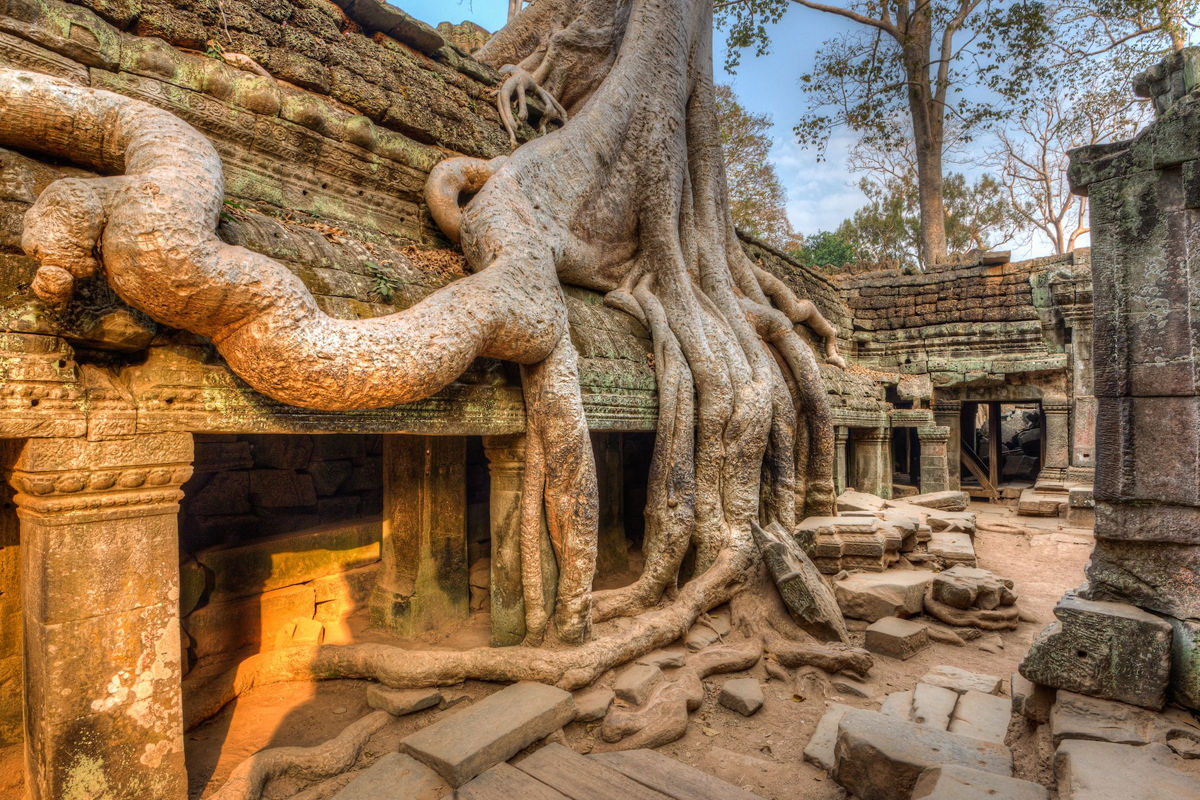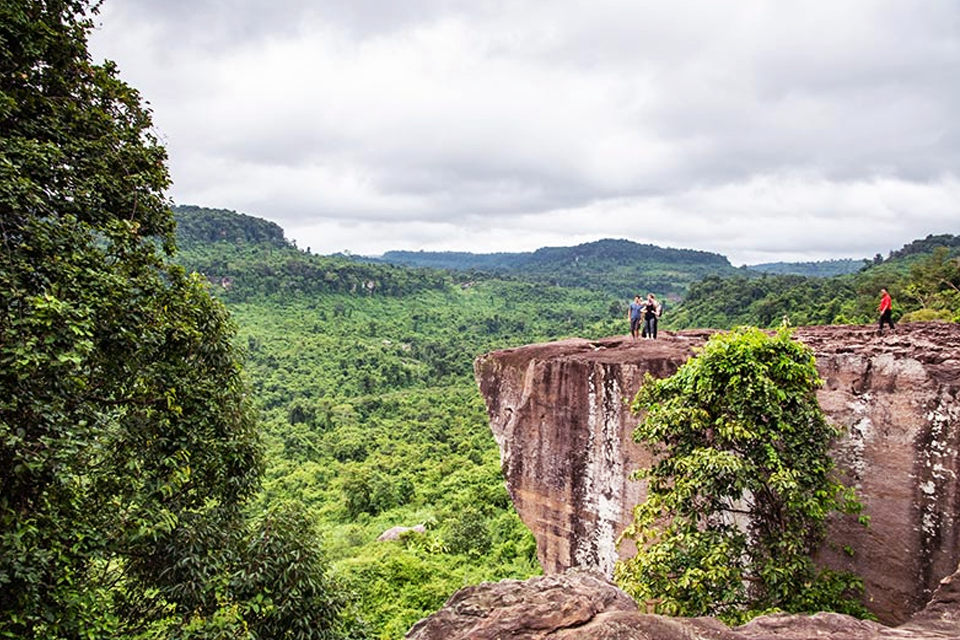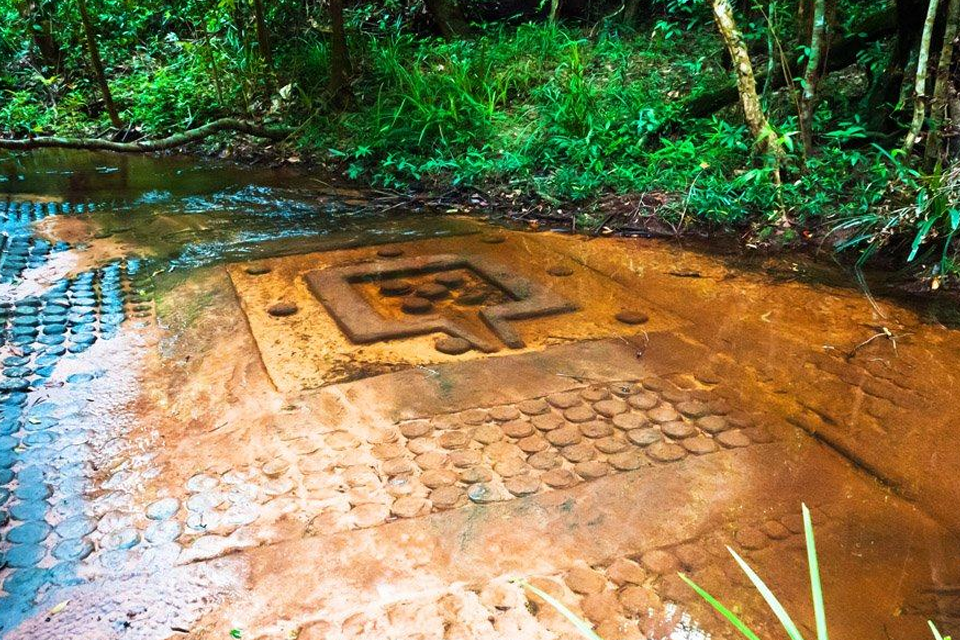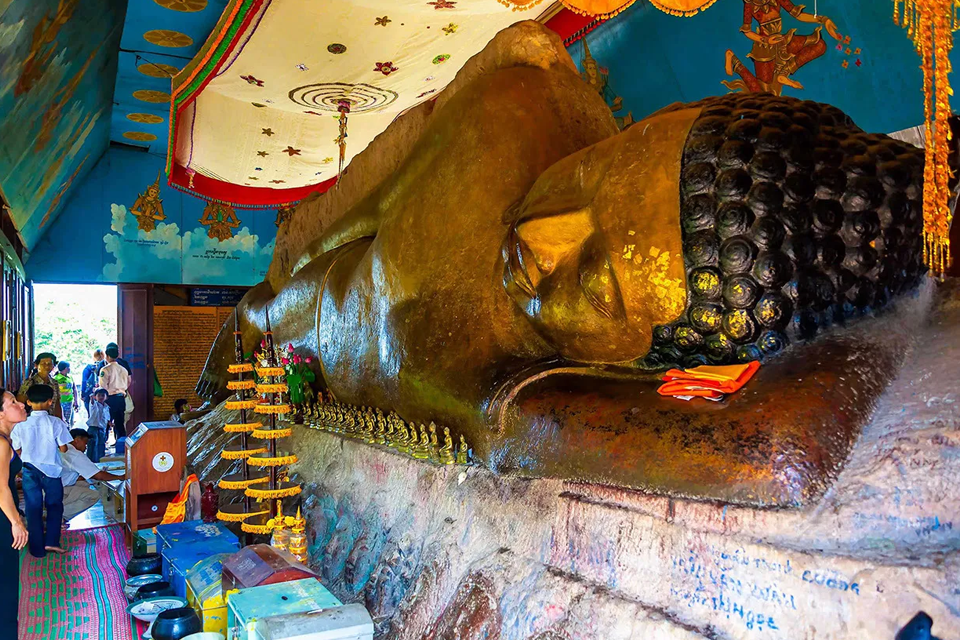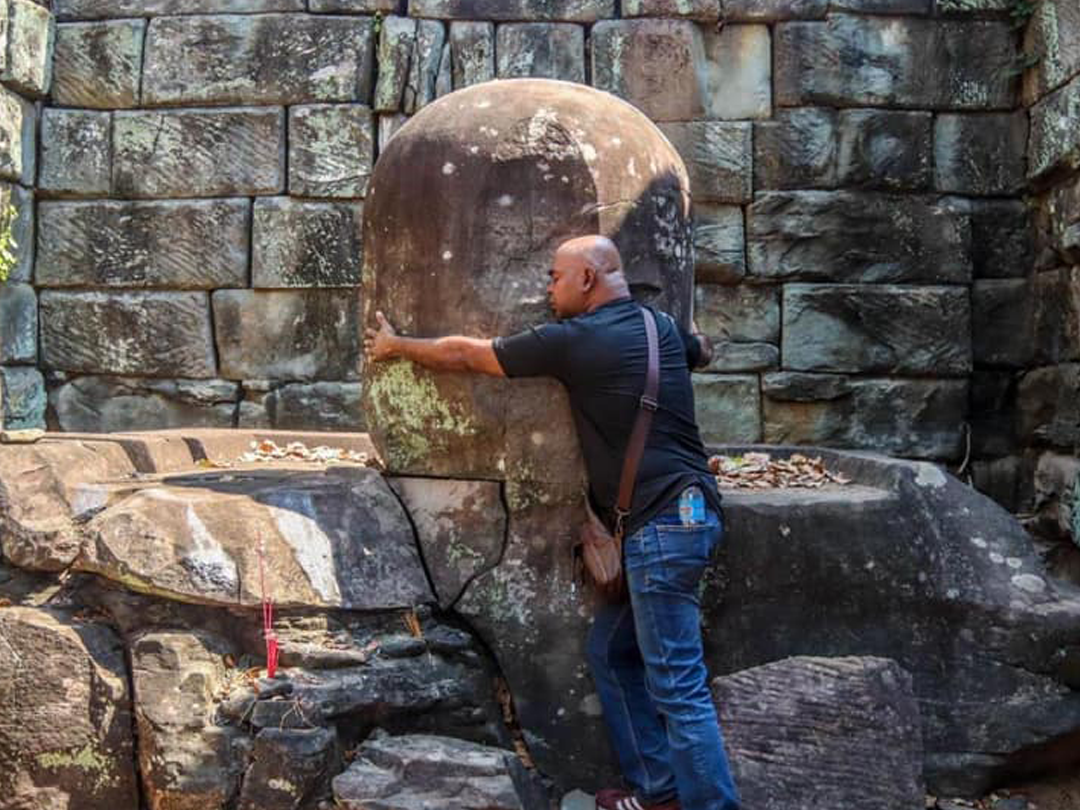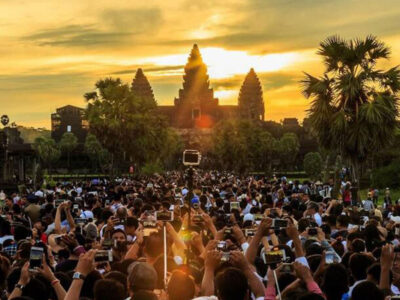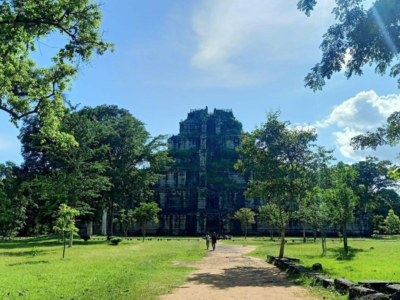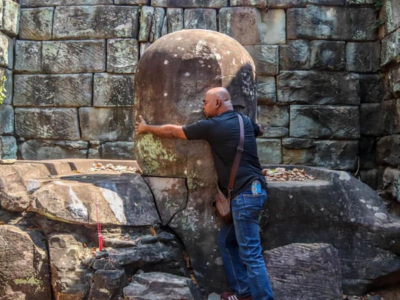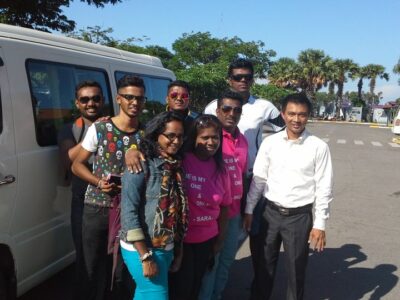Unlock the Secrets of Angkor Wat and Hindu myths in 3 Day Tour
Embark on this heritage journey and explore the mysterious monuments of the former capital of the Khmer Empire of Angkor Wat (Parama Visnu Loka) and Angkor Thom. Witness the Marvelous carvings of Hindu myths on the Angkor Wat temple and the remnants of the Khmer Empire at Koh Ker Temples and Shiva Lingam temple. Walk through the jungle temple of Ta Prohm and the beautiful waters and greenery at Phnom Kulen Mountain (Mahendra Parvata).
Tour Price
- $ 490/PG from 1-2 People
- $ 580/PG from 3-6 People
- $ 670/PG from 7-10 People
Private Group
About this tour
* Day 1: Pick up from SAI airport to hotel in Siem Reap
* Day 2: Visit Parama Visnu Loka and its temples
* Day 3: Visit the sacred Mahendra Paravata
* Day 4: Visit the temple complex at Koh Kor and Shiva Lingam temple
* Day 5: Transfer from hotel to SAI airport
Daily experience
– Hotel Pick Up: 08:00 am
– Private group
– English tour guide
– Temples Visited: Angkor Thom, Bayon, Ta Prohm, Angkor Wat, Kulen waterfall, 1000 Linga, Reclining Buddha, floating village, Koh Ker group and Apsara performance
Highlights
– Explore the world-famous Parama Visnu Loka and its temples
– Walk through the jungle to reach the Ta Prohm Temple, also called the jungle temple
– See the Bayon temple, said to be the heart of Angkor Thom
– Go to the sacred Mahendra Paravata
– Visit the temple complex at Koh Kor and Shiva Lingam temple
– Enjoy the boat ride to Kampong Phluk Floating village
– Watch a traditional Apsara dance
- Foot or body massage
Itinerary
Day 1- Arrive in Siem Reap
Meet the tour representative, who will pick you up from Siem Reap International Airport and head to the hotel for check in.
Then go to have a dinner in the Siem Reap city.
Day 2: Explore the sacred site of Parama Visnu Loka
After have breakfast at 08:30 am, and you will head out with your guide to Angkor Thom, the ancient capital of the Khmer empire. Starting at the South Gate, you will explore the complex and visit the central Bayon temple, the 3-tiered Hindu Baphoun temple, and the Terrace of the Elephants, which is part of the walled city. Visit the Ta Prohm jungle temple, built by King Jayavarman VII in 1186. You may recognize the temple and the jungle that has engulfed it from the Hollywood movie Tomb Raider. After lunch, continue your temples tour at the legendary Parama Visnu Loka complex, the most famous of the Khmer kingdom temples, and site of its former capital. Admire exquisite carvings and bas reliefs dedicated to the Hindu god Vishnu and see scenes depicting Hindu mythology.
Apsara Performance and Buffet Dinner
At 18:00 we will pick you up from hotel to theater for Artistic Khmer Performance, one of a kind traditional dance show that incorporates the once-lost art dated back centuries ago with modern aura. The performance exhibits chronicle of the rich history of the Khmer Kingdom as well as the Dark Ages of Cambodia. Visitors will have an immersive experience of the history while enjoying the exquisite dinner.
Day 3: Go to the Mahendra Parvata
Experience the rich culture of Cambodia on this full-day tour of the sacred Mahendra Parvata, birthplace of the Khmer Empire, where you will see thousands of Linga carvings. Following a hotel pick-up in Siem Reap, drive to Phnom Kulen Mountain, widely regarded as the site of the beginnings of the ancient Khmer Empire. The isolated chain of mountain plateau lies south of the Dangrek Mountains, north of Siem Reap. Considered a holy mountain in Cambodia, it is of special religious significance and a place of pilgrimage for Hindus and Buddhists. The site of thousands of Linga carvings under the water stream, among the highlights you will explore are the 16th-century statue of a Grand Reclining Buddha, and the cascades of the Big Waterfall. Have lunch at a local restaurant.
Embark on a journey of a lifetime and witness the indomitable spirits of floating village residents. Discover the mesmerizing beauty of Kompong Phluk, one of Siem Reap’s most attractive floating villages. Browse the local market or pagoda before diving into jaw-dropping floating homes. Marvel at how these people have adapted to extreme conditions with beaming smiles. Indulge in serene boat rides and create unforgettable memories.
Day 4: Visit the Prasat Thom and Shiva Lingam temple at Koh Ker
You’ll start out with the 130-kilometer drive through the scenic countryside from Siem Reap to the remote site of the Koh Ker temple group. The temple complex at Koh Kor, located to the north-east of Siem Reap, represents the remnants of the capital of the Khmer empire from 928-944 A.D. Visit the Prasat Thom is the principal monument at Koh Ker is Prasat Thom. The staircase to the top is open to a limited number of visitors and the views are spectacular if you can stomach the heights. Some 40 inscriptions, dating from 932 to 1010, have been found here. Then continue to the Shiva Lingam temple the square shrine, monolithic in scale, shares its layout and likely its purpose with 3 more that are aligned on a north-south axis whilst having a relationship with the east-west axis of Prasat Thom. None of these gigantic lingam shrines have roofs, perhaps unfinished, or made from perishable materials and lost to time.
Day 5- Departure
Enjoy free time until you are transferred to the SAI airport.
What’s Included
– SAI airport Pick up and drop off
– Hotel pick up and drop off
– English speaking tour guide
– Transportation with driver
– Cool drinking water during the tour
What’s Excluded
– Personal expenses
– Lunch and Dinner
– All entrance fees
– Accommodation
- Massage
– Buffet dinner with Apsara dancing show
– Tips for the tour guide and driver
What to bring
Comfortable shoes Loose, lightweight, long clothing that is both respectful and cool in the hot Asian climate
Remember:
Dress standards are conservative throughout Asia, especially outside major cities. To respect this and for your own comfort, please wear modest clothing. This means clothing that covers your shoulders and knees. The Apsara Authority, which manages the park, reserves the right to refuse entry to certain areas of the site for guests who wear clothing that is considered immodest. No smoking, drinking alcohol, or touching the carvings is permitted in and around the temples. Closure of site: The third level of Angkor Wat is not open during Buddhist holidays.
Why is Angkor Wat so famous?
Nestled within the province of Siem Reap in Cambodia lies the vast Angkor Archaeological Park, a crown jewel of the country’s tourist hotspots. Hidden within the dense rainforest undergrowth, you’ll discover the towering remnants of an ancient stone city, echoing tales of a bygone era. Cambodia boasts a rich assortment of temples and structures, yet the one that consistently captures the most fascination is the monumental Angkor Wat. Its prominence is such that it graces the country’s national flag – a testament to its cultural and historical significance. Built in the 12th century, this majestic “temple-mountain” was originally designed to serve as the dwelling place for the Hindu deity, Vishnu. Its architectural grandeur and historical relevance make it a must-visit destination for any traveler exploring Cambodia. The bas-relief galleries on many of the walls of one of the most spectacular temples in Cambodia depict themes from Cambodian mythology and culture that extend back hundreds of years.
Is Angkor Wat a sun temple?
– The primary tower of the Angkor Wat temple is oriented in such a way that it faces the rising sun on the vernal equinox and the autumnal equinox. – Angkor Wat faces west rather than east, in contrast to the majority of other Khmer temples in the region. Many historians have arrived at the conclusion that as a result of this, Suryavarman intended for it to serve as his funeral temple. The fact that the temple was built in such a manner led them to this conclusion, and it was based on this fact alone.
Reveal the Mysterious of Kulen mountain
A hidden treasure lies beyond the commotion of Siem Reap. There are more than 50 temples and stupas perched on the edge of a cliff in the ancient city of Kulen, many of which have not yet been discovered by mainstream travelers. Explore a historically significant region by straying far from the beaten path. This day trip takes you to the “Age of Angkor” and Buddha’s preferred location on Earth. A hike to Kulen Waterfall and National Park will reward you with breathtaking views of the surrounding forested mountains and a refreshing dip in one of Cambodia’s tallest cascading waterfalls. We will traverse kilometers of intricate back trails, deep jungle tracks, and hidden temples, including the beautiful and highly sought-after stone elephant and lion statues.
When is the best time to visit?
The dry season, which lasts from November to March, is the most popular time to visit Kulen Mountain and Waterfall. These days are cooler and dryer, but they are also the busiest, so expect crowds. Despite the fact that these are technical “winter” months, weather conditions are still quite warm.
Why travel so far to see Koh Ker?
The mountains of Dangrek, Kulen, and Tbeng may be seen in the background of the jungle setting of Koh Ker. Koh Ker is nearly as huge as the Angkor complex, spanning 81 square kilometers over its entirety; yet, due to its more distant location, it has suffered greater damage and pillage over the course of its history. If you go at the right time of year, you might find the ruins hidden in the foliage and thick vegetation, but at other times of the year they might be completely visible amongst the bare trees. – Koh Ker is one of the temple locations from the Angkor period that has received the least amount of research. – Since Koh Ker has just been half excavated, there is a good chance that you will discover something that has been hidden. – Since much of the information researchers had gathered about the place during the Khmer Rouge was destroyed, the location is essentially indecipherable.
The Great of Lingam Temple
– Properties and Spiritual Powers
– Healing Energy, Geology and History The nearest monuments to the main temple complex of Koh Ker of Prasat Thom are five isolated temples belonging to the Northeast group. Each of them housed a monolithic decorated Lingam of enormous size on equally immense Yoni pedestals, which symbolizes the female genitals. That is why the five unique structures are called Linga-temples, named from G to K and numbered from 277 to 281. All Linga temples open to Rahal. They are square towers and now without a roof. These five sandstone towers were wider and taller than their predecessors at Roluos and Angkor. The increased size of the building and the Lingams, which are some of the greatest known in Khmer art, is a remarkable feature of the architecture of Koh Ker. Lunet die Lajonquière assumed that this development in size was only manageable, extending the use of woodworking.
Term & Condition
– All above rate is quite in US dollar
– Deposit 50% in advance
– Please do not hesitate to contact us at the 24/7 services following email address [email protected], WhatsApp or Telegram: +855974532168 we are always on hand to assist with your inquiry.
Note:
If you not recieved the reply in 24 hours, please contact us or make the reservation via WhatsApp below.

